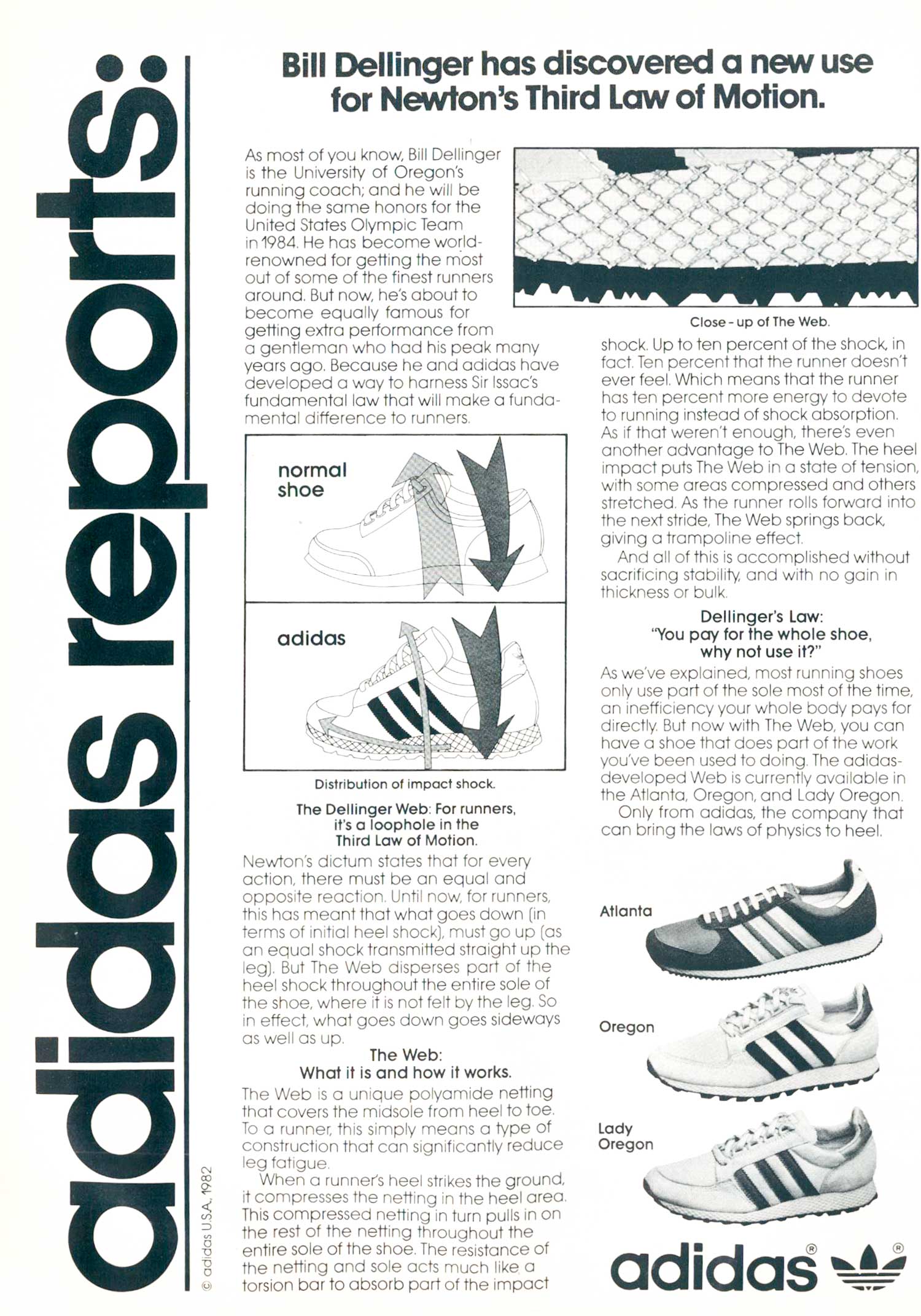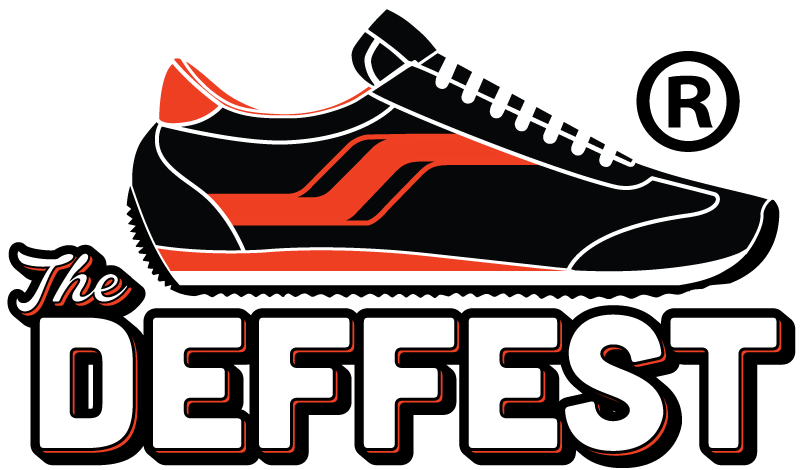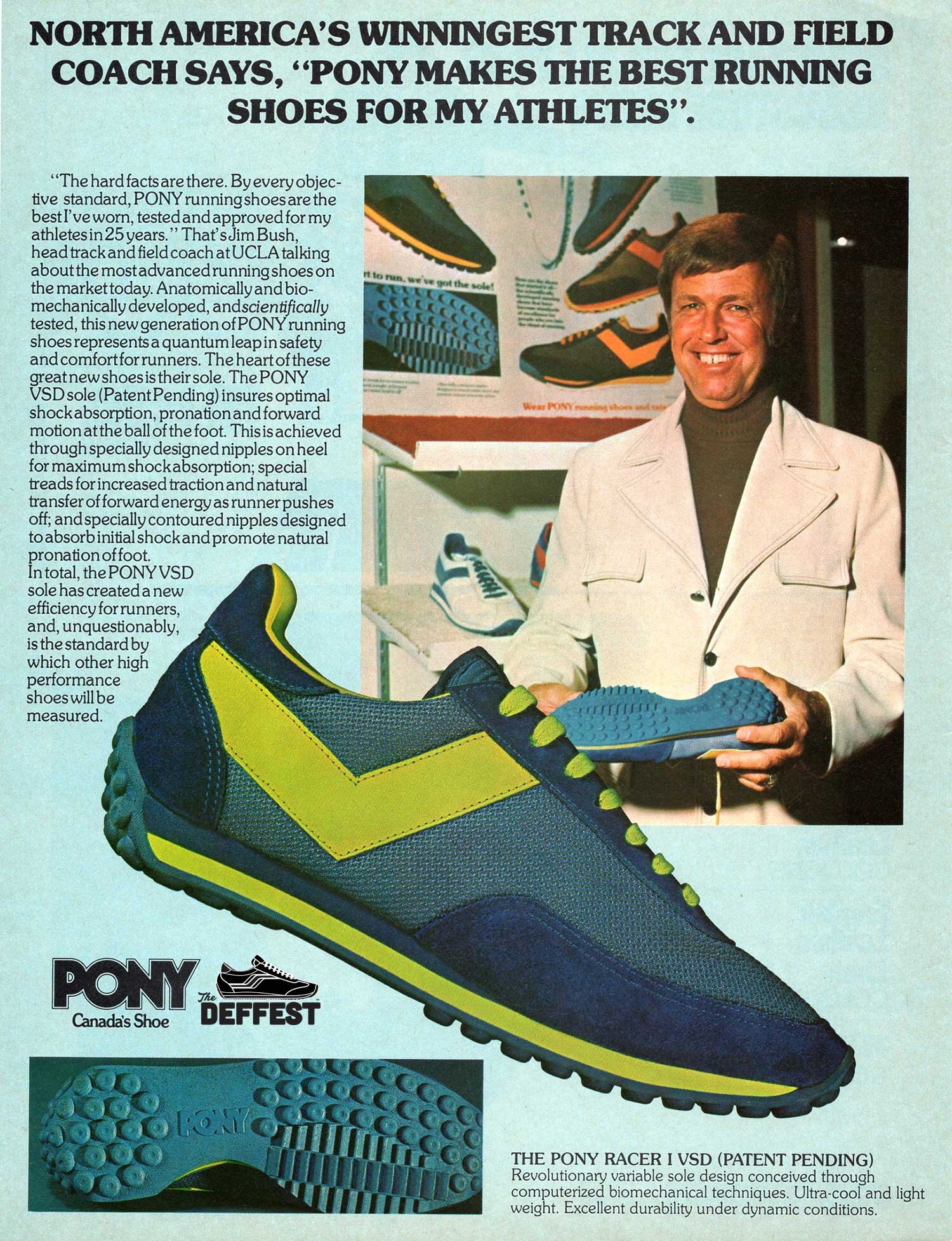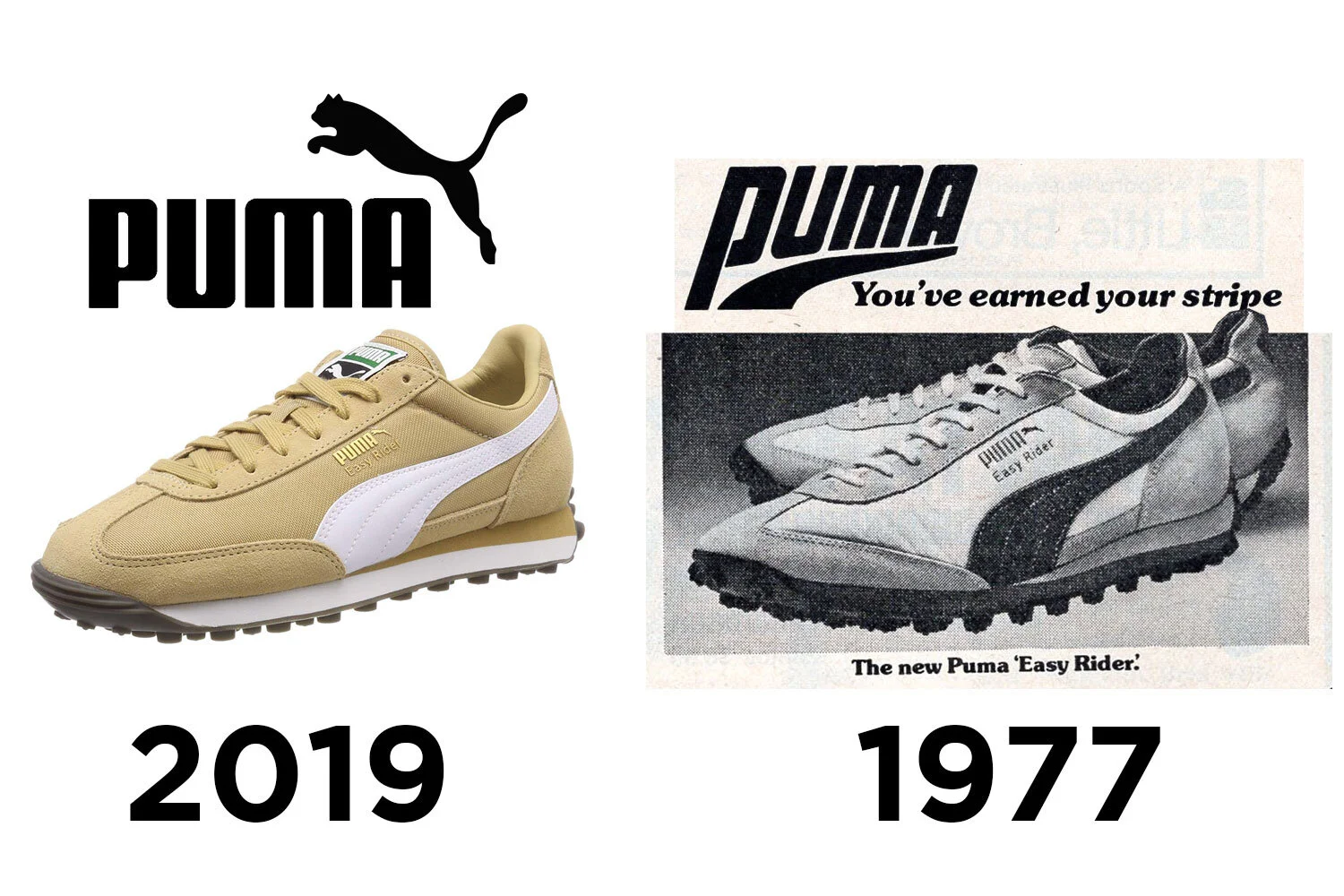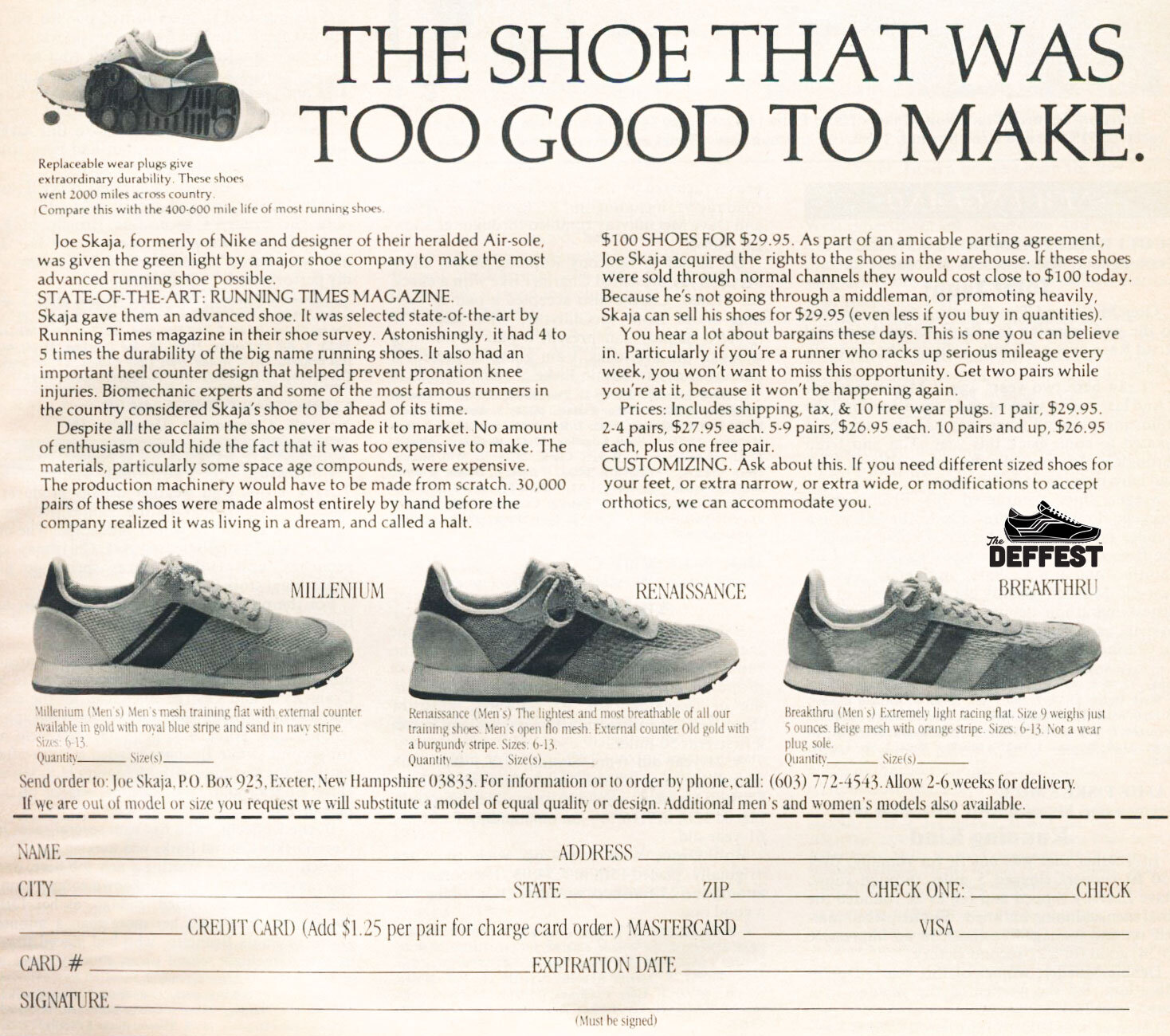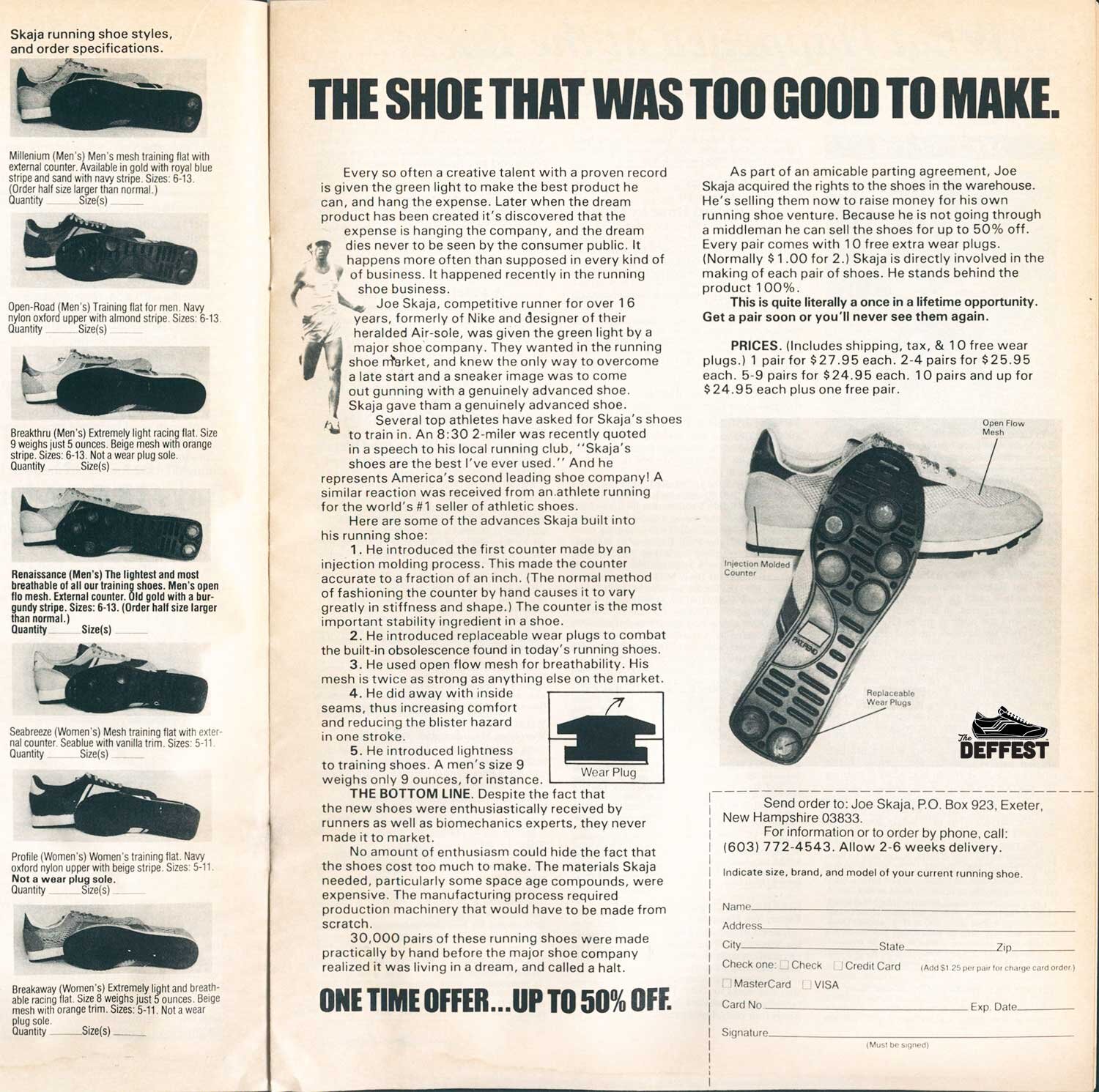Today we’ve got a couple of Joe Skaja 1983 vintage running shoe ads for "THE SHOE THAT WAS TOO GOOD TO MAKE." Joe Skaja, formerly of Nike, was given the green light by "a major shoe company" to make what they're saying is the most advanced running shoe possible.
There’s an older advertisement from 1981 when these shoes were released as Keds brand which I think is why the side profile logo is blocked out in the ad above.
If you want to learn more Sneaker Freaker has a great article called "Material Matters: Fables Of The Forgotten" which talks about these and other shoes from that era who were looking to innovate. This is direct from their article "Joe Skaja, a former Nike employee, came to the rescue with a wild idea: a system of interchangeable nubs arranged around the base of the shoe. When the nubs wore down you could simply pop some new ones in and get back to the track."
Ad info is below:
THE SHOE THAT WAS TOO GOOD TO MAKE.
Replaceable wear plugs give extraordinary durability. These shoes went 2000 miles across country. Compare this with the 400-600 mile life of most running shoes
Joe Skaja, formerly of Nike and designer of their heralded Air-sole, was given the green light by a major shoe company to make the most advanced running shoe possible.
STATE-OF-THE-ART: RUNNING TIMES MAGAZINE.
Skaja gave them an advanced shoe. It was selected state-of-the-art by Running Times magazine in their shoe survey. Astonishingly, it had 4 to 5 times the durability of the big name running shoes. It also had an important heel counter design that helped prevent pronation knee injuries. Biomechanic experts and some of the most famous runners in the country considered Skaja's shoe to be ahead of its time. Despite all the acclaim the shoe never made it to market. No amount of enthusiasm could hide the fact that it was too expensive to make. The materials, particularly some space age compounds, were expensive. The production machinery would have to be made from scratch. 30,000 pairs of these shoes were made almost entirely by hand before the company realized it was living in a dream, and called a halt.
$100 SHOES FOR $29.95. As part of an amicable parting agreement, Joe Skaja acquired the rights to the shoes in the warehouse. If these shoes were sold through normal channels they would cost close to $100 today. Because he's not going through a middleman, or promoting heavily, Skaja can sell his shoes for $29.95 (even less if you buy in quantities). You hear a lot about bargains these days. This is one you can believe in. Particularly if you're a runner who racks up serious mileage every week, you won't want to miss this opportunity. Get two pairs while you're at it, because it won't be happening again. Prices: Includes shipping, tax, & 10 free wear plugs. 1 pair, $29.95. 2-4 pairs, $27.95 each. 5-9 pairs, $26.95 each. 10 pairs and up, $26.95 each, plus one free pair.
CUSTOMIZING. Ask about this. If you need different sized shoes for your feet, or extra narrow, or extra wide, or modifications to accept orthotics, we can accommodate you.
👟 MILLENIUM 👟 RENAISSANCE 👟 BREATHRU
Millenium (Men's) Men's mesh training flat with extemal counter. Available in gold with royal blue stripe and sand in navy stripe. Sizes: 6-13.
Renaissance (Men's) The lightest and most breathable of all our training shoes. Men’s open flo mesh. External counter. Old gold with a burgundy stripe. Sizes: 6-13.
Breakthru (Men's) Extremely light racing tat. Size 9 weighs just 5 ounces. Beige mesh with orange stripe. Sizes. 6-13. Not a wear plug sole.
Send order to: Joe Skaja, P.O. Box 923, Exeter, New Hampshire 03833. For information or to order by phone, call: (603) 772-4543. Allow 2-6 weeks for delivery. If we are out of model or size you request we will substitute a model of equal quality or design. Additional men's and women's models also available.
Ad 2 info is below:
Skaja running shoe styles, and order specifications.
Millenium (Men's) Men's mesh training flat with external counter. Available in gold with royal blue stripe and sand with navy stripe. Sizes: 6-13. (Order half size larger than normal.) Quantity Size(s)
Open-Road (Men's) Training flat for men. Navy nylon oxford upper with almond stripe. Sizes: 6-13. Quantity Size(s)
Breakthru (Men's) Extremely light racing flat. Size 9 weighs just 5 ounces. Beige mesh with orange stripe. Sizes: 6-13. Not a wear plug sole. Quantity Size(s)
Renaissance (Men's) The lightest and most breathable of our training shoes stripe. Men’s open flo mesh. External counter. Old gold with a burgundy stripe. Sizes: 6-13. (Order half size larger than normal.) Quantity Size(s)
Seabreeze (Wornen's) Mesh training flat with external counter. Seablue with vanilla trim. Sizes: 5-11 Quantity Steels)
Profile (Wornen's) Women's training flat. Nary oxford nylon upper with beige stripe. Sizes: 5-11. Not a wear plug sole. Quantity Size(s)
Breakaway (Women’s) Extremely light and breathable racing flat. Size 8 weighs just 5 ounces. Beige mesh with orange trim. Sizes: 5-11. Not a wear Quantity Size(s)
THE SHOE THAT WAS TOO GOOD TO MAKE.
Every so often a creative talent with a proven record is given the green light to make the best product he can, and hang the expense. Later when the dream product has been created it's discovered that the expense is hanging the company, and the dream dies never to be seen by the consumer public. It happens more often than supposed in every kind of of business. It happened recently in the running shoe business.
Joe Skaja, competitive runner for over 16 years, formerly of Nike and designer of their heralded Air-sole, was given the green light by a major shoe company. They wanted in the running shoe market, and knew the only way to overcome a late start and a sneaker image was to come out gunning with a genuinely advanced shoe. Skaja gave theme genuinely advanced shoe.
Several top athletes have asked for Skaja's shoes to train in. An 8:30 2-miler was recently quoted in a speech to his local running club, "Skaja's shoes are the best I've ever used." And he represents America's second leading shoe company! A similar reaction was received from an.athlete running for the world's #1 seller of athletic shoes. Here are some of the advances Skaja built into his running shoe:
1. He introduced the first counter made by an injection molding process. This made the counter accurate to a fraction of an inch. The normal method of fashioning the counter by hand causes it to vary greatly in stiffness and shape.) The counter is the most important stability ingredient in a shoe.
2. He introduced replaceable wear plugs to combat the built-in obsolescence found in today's running shoes.
3. He used open flow mesh for breathability. His mesh is twice as strong as anything else on the market
4. He Ad away with inside seams, thus increasing comfort and reducing the blister hazard in one stroke.
5. He introduced lightness to training shoes. A men's size 9 weighs only 9 ounces, for instance
THE BOTTOM LINE. Despite the fact that the new shoes were enthusiastically received by runners as well as biomechanics experts, they never made it to market. No amount of enthusiasm could hide the fact that the shoes cost too much to make. The materials Skaja needed, particularly some space age compounds, were expensive. The manufacturing process required production machinery that would have to be made from scratch. 30,000 pairs of these running shoes were made practically by hand before the major shoe company realized it was living in a dream, and called a halt.
Wear Plug
ONE TIME OFFER...UP TO 50% OFF.
As part of an amicable parting agreement, Joe Skaja acquired the rights to the shoes in the warehouse. He's selling them now to raise money for his own running shoe venture. Because he is not going through a middleman he can sell the shoes for up to 50% off. Every pair comes with 10 free extra wear plugs. (Normally $1.00 for 2.) Skaja is directly involved in the making of each pair of shoes. He stands behind the product 100%. This is quite literally a once in a lifetime opportunity. Get a pair soon or you'll never see them again.
PRICES. (Includes shipping, tax, & 10 free wear plugs.) 1 pair for $27.95 each. 2-4 pairs for $25.95 each. 5-9 pairs for $24.95 each. 10 pairs and up for $24.95 each plus one free pair.
